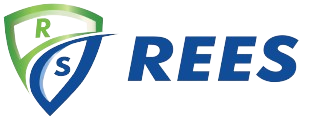EMS
How to Choose the Right Environmental Monitoring System for Your Facility
Author: Gagan Kaur
Sep 6, 2024

Choosing the right environmental monitoring system is crucial for maintaining compliance, ensuring the integrity of sensitive environments, and optimizing operational efficiency. With a plethora of options available, selecting the right system can be daunting. Rees experts offer practical advice on how to choose the best monitoring solution tailored to your facility’s specific needs.
Assessing Your Facility’s Requirements
1. Determine Your Facility Size
The size of your facility significantly influences the type of monitoring system you need. Larger facilities may require a more complex and scalable system with multiple monitoring points, while smaller facilities might benefit from simpler, more focused solutions.
Large Facilities: Whether a single location or multi-site, opt for systems that offer extensive scalability and can handle multiple monitoring points efficiently. Consider wireless or hybrid (hardwired and wireless) solutions for ease of installation and flexibility.
Small Facilities: Look for compact, integrated systems that offer robust monitoring capabilities without unnecessary complexity. Cloud solutions offer great flexibility and can often be easily implemented.
2. Tailoring Monitoring Solutions by Industry
Each industry has unique compliance requirements and operational needs. Choosing a monitoring system that aligns with your specific environment is key to ensuring both regulatory compliance and optimal performance.
Hospitals and Healthcare Facilities: Monitoring Requirements & Solutions
What to Monitor: Temperature, humidity, differential pressure (in ORs and isolation rooms), and refrigerator/freezer storage.
Key Considerations: Must meet JCAHO and CDC standards. Systems should offer redundancy and 24/7 alerting for life-critical storage (e.g., vaccines, blood).
Recommended Features: Real-time alarms via SMS/phone, centralized dashboard for multiple departments, and calibration tracking.
Pharmaceutical Manufacturing: Compliance-Focused Monitoring
What to Monitor: Temperature, humidity, pressure, particle counts in cleanrooms.
Key Considerations: Systems must support FDA 21 CFR Part 11 compliance and GMP validation protocols.
Recommended Features: Secure data logging, audit trails, sensor accuracy with ISO 17025 calibration, and validation-ready documentation.
Research Laboratories: Protecting Samples and Compliance
What to Monitor: Temperature (ultra-low freezers), humidity, CO₂ (incubators), and differential pressure (clean zones).
Key Considerations: Sample integrity is paramount. Monitoring needs to be precise, with alerts for any deviations.
Recommended Features: Custom alert thresholds, historical trending reports, and centralized monitoring for multiple lab spaces.
Cell and Gene Therapy Facilities: High-Precision Environmental Control
What to Monitor: Ultra-low temperature storage (LN2, -80°C freezers), CO₂ levels in incubators, humidity, and room pressure differentials in classified spaces.
Key Considerations: Cell and gene therapies involve high-value, sensitive biologics with very narrow environmental tolerances. Strict compliance with GMP, GTP, and 21 CFR Part 11 is essential.
Recommended Features: End-to-end temperature mapping and calibration services, redundant sensor configurations, automated data logging with audit trails, and seamless integration with quality and validation workflows.
Blood and Tissue Banks: AABB and FDA-Compliant Solutions
What to Monitor: Temperature in storage units, ambient conditions, and door access events.
Key Considerations: Must comply with FDA and AABB standards. Redundancy and fail-safes are critical.
Recommended Features: High-accuracy temperature probes, real-time alerts with escalation paths, and traceability for audits.

Evaluating Environmental Conditions
1. Identify Critical Parameters
Determine which environmental parameters are critical for your operations. Common parameters include temperature, humidity, differential pressure, O2 and CO2 levels. Understanding these needs will help narrow down the appropriate monitoring solutions.
Temperature: Crucial for many industries, especially where products are temperature sensitive.
Humidity: Important in environments where moisture levels can impact product quality or safety.
Differential Pressure: Vital in facilities requiring controlled airflow to prevent contamination.
O2 Levels: Relevant in life safety settings where oxygen depletion may occur.
CO2 Levels: Often used in incubators to maintain a constant level of CO2.
2. Consider Environmental Variability
Evaluate the environmental conditions of your facility. Are there areas with significant temperature fluctuations or varying humidity levels? Ensure the chosen monitoring system can handle these variabilities without compromising accuracy or reliability.
Choosing the Right Features
1. Real-Time Monitoring and Alerts
Real-time monitoring and alert systems are essential for promptly addressing any deviations from set parameters. Choose systems that offer immediate notifications via telephone, email, SMS, or other channels to ensure swift corrective actions.
2. Data Logging and Reporting
Data logging capabilities are crucial for maintaining records and generating reports for audits and compliance checks. Look for systems that offer extensive data storage, easy retrieval, and advanced reporting options.
3. User-Friendly Interface
A user-friendly interface is essential for ensuring that staff can easily operate and manage the monitoring system. Look for intuitive software that simplifies data interpretation and system management.
Leveraging Expert Support and Consultation
1. Benefit from Professional Consultation
Engage with Rees expert sales and service members who provide consultative support to identify the best monitoring solution for your facility. Our experts can perform a thorough needs assessment and recommend tailored solutions based on your specific requirements.
2. Prioritize Training and Support
Choosing the right system is only the first step. Ensure that your team receives comprehensive training on system operation and maintenance. Rees Scientific offers extensive training programs and ongoing support to help you maximize the benefits of your monitoring system.
3. Consider Long-Term Service and Maintenance
Select a provider that offers robust after-sales service and maintenance. Rees’ strategically located team of over 200 sales and service members ensures prompt, localized support, setting us apart from competitors who outsource these services.
Conclusion
Choosing the right environmental monitoring system for your facility involves a careful assessment of your specific needs, industry requirements, and environmental conditions. By focusing on critical parameters, evaluating necessary features, and leveraging expert support, you can select a monitoring solution that ensures compliance, maintains optimal conditions, and enhances operational efficiency. Trust Rees Scientific's expertise and personalized service to guide you in making the best choice for your facility.



